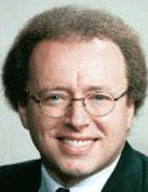

 |
Rob Axtell | Department of Computational Social Sciences, George Mason University Randy Casstevens | Santa Fe Institute Thursday October 2, 2008, 4:30 PM | Research 1 Room 301 The evolution of economic goods and services is modeled as a stochastic process of recombination conducted by purposive agents. There is an initial ‘seed set’ of goods, each having an intrinsic economic fitness, assessed subjectively by individual agents. Each agent adopts some subset of these goods based on its subjective perceptions. The innovation process proceeds by individual agents inventing new goods, with most attempts at innovation leading to goods having low economic fitness. However, some inventions do have fitness exceeding current goods and may be adopted. The adoption process proceeds with each agent considering the new good, developing an idiosyncratic assessment of its value, and accepting it only if this value exceeds the least valuable item it holds. If no agent adopts a new product then it is unsuccessful and has no further possibility of being adopted. This simple model has a variety of robust properties. First, agent welfare is monotonically increasing over time, since agents only adopt subjectively superior products. Second, the population of goods is transient, with the initial seed set becoming extinct, and all goods having finite lifetimes. We compare the distribution of invention lifetimes in the model with stylized facts. Third, the number of new inventions adopted is very volatile, and seems to display clustered volatility. Fourth, the total number of goods in the economy over time is very irregular, displaying periods of relative stasis in which few inventions are successful, punctuated by periods of rapid technological progress in which there is dramatic change in the goods being used. These episodes of technological change can be instances of ‘creative destruction’ insofar as one or a few successful inventions can lead to the extinction of some larger number of predecessor goods. Finally, each new good in the model is generated from a graph of technological antecedents. This graph has interesting properties and technological lineages can be readily determined from it. The relation of this model to other abstract models of technological and biological evolution is described.
|